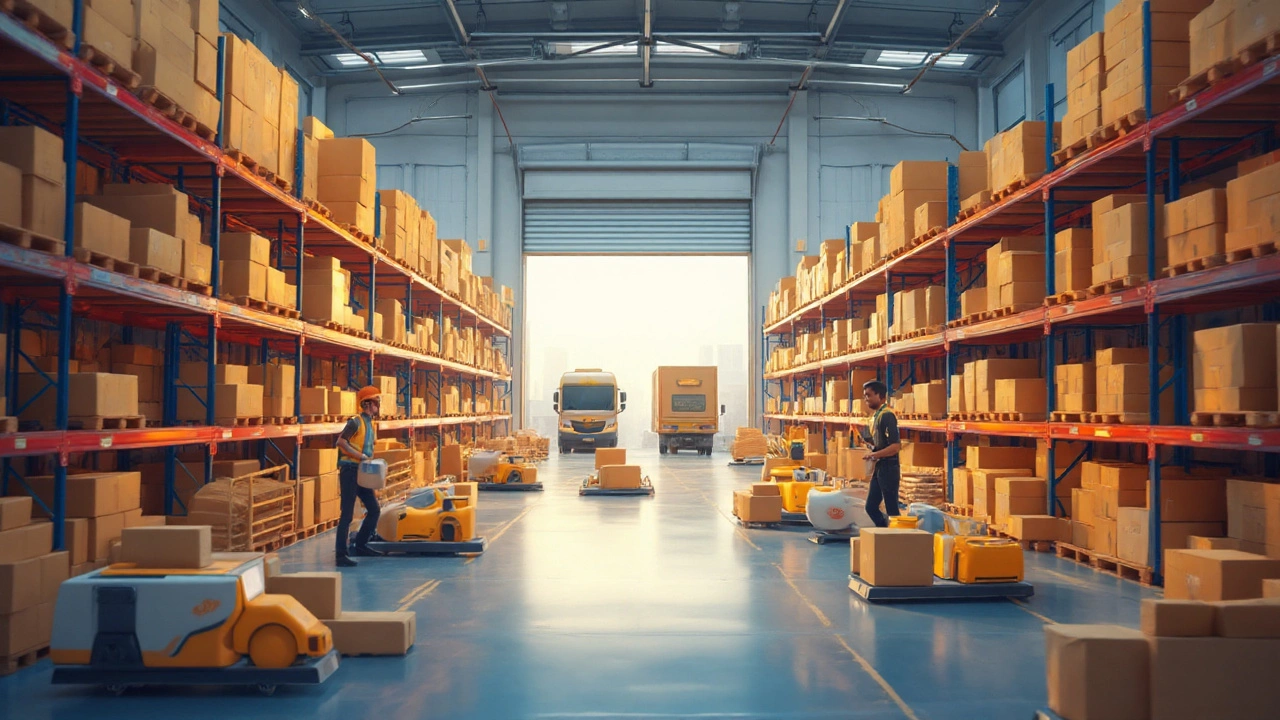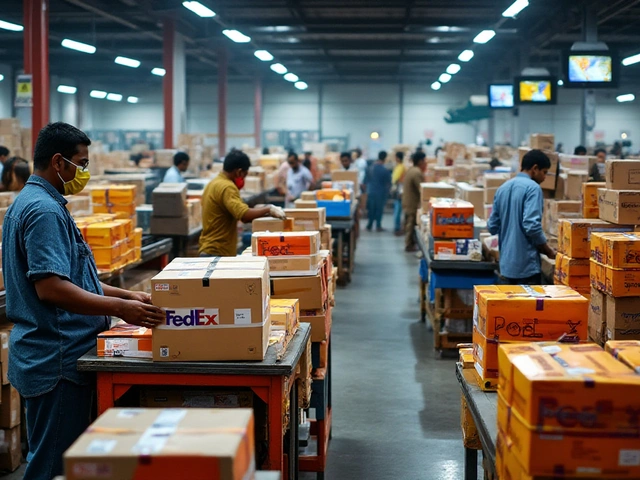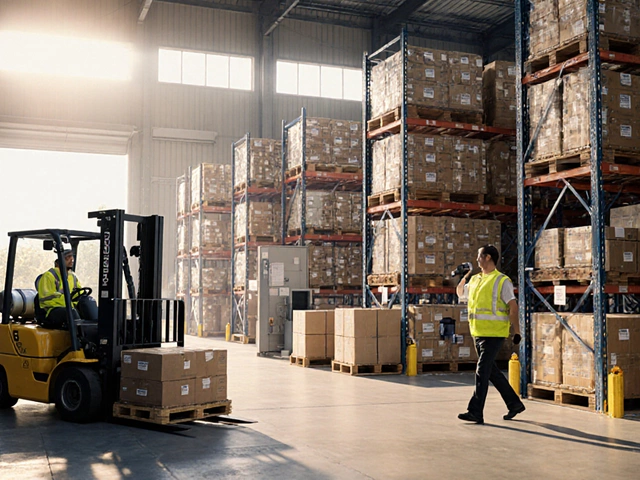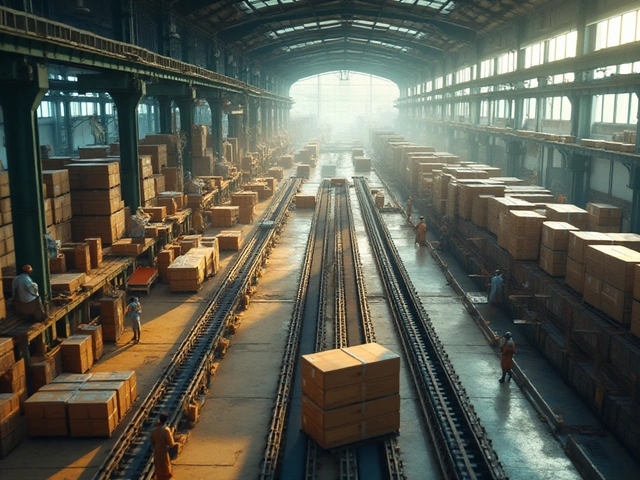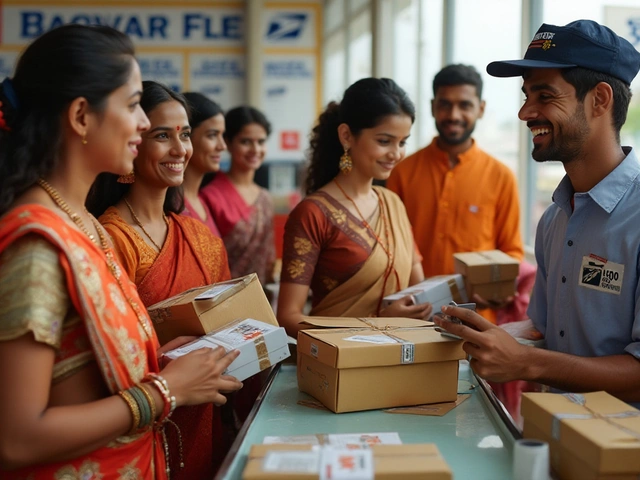Imagine a world where you tap “Order Now” and your package lands on your doorstep in less than a day—no magic, just e logistics humming in the background. The crazy part? All of this happens with barely any human hands involved. Back in 2020, people spent hours comparing products and even more time waiting for parcels lost somewhere between a sea container and a dusty shelf. Now, in 2025, the game isn’t just about moving boxes. It’s about smart tech that gets your stuff from screen to home almost by itself. You’d be surprised how much tech muscle goes into every online purchase you make, and how little actual fuss there is—when it works well. Let’s break down the gears and pulleys behind electronic logistics, from warehouses that think for themselves to real-time delivery routes mapped in seconds.
Anatomy of E Logistics: Mapping the Digital Journey
To understand how e logistics ticks, you’ve got to follow an order’s digital footprints. The second you buy online, your order shoots into a company’s system and triggers a choreography of software and robots. In a modern ecommerce warehouse, goods are tracked with RFID tags—tiny labels that use radio waves to announce, “I’m here!” to sensors. These yards can process over 100,000 orders a day; Amazon’s biggest fulfillment center pushes about 700,000 shipments out like clockwork during busy seasons. Every item’s location updates in real-time, with artificial intelligence picking the fastest shelf route for a robotic picker to grab your earphones or hoodie.
But it’s not just about finding your stuff. The system runs analytics to predict which products will trend next week, shifting inventory closer to where it’ll be needed—think sneakers trending in Berlin after a celebrity photo goes viral. Inventory isn’t just counted; it’s moved automatically. Cloud-based dashboards let managers watch the whole dance from their phones: stock levels, delivery promises, even which loading docks are busy. E logistics works 24/7; there are no “office hours” for the algorithms. That’s why, during sales like Black Friday, companies can scale up or down with hardly any downtime or chaos.
Here’s a snapshot of the efficiency e logistics has brought since 2021:
| Year | Avg. Order-to-Ship Time | Typical Error Rate | Warehouse Robot Usage |
|---|---|---|---|
| 2021 | 2.8 days | 1.7% | 22% |
| 2023 | 1.5 days | 1.0% | 46% |
| 2025 | 0.7 days | 0.6% | 62% |
Warehouse syncing with delivery isn’t just about software. Delivery drivers now use GPS trackers tied directly to route-optimization software. These programs adjust stops on the fly if there’s a highway jam or a customer isn’t home. You can watch your courier inch across the city in real time from an app, shaving away anxiety and rerouting delivery attempts with just a tap. For high-value goods—think tablets or luxury bags—e logistics systems add extra layers: location-locked lockers, biometric scans for pick-up, sometimes even drone surveillance for large depots.
You’ve probably heard of “last mile” headaches, the final flat tire between the warehouse and your door. The e logistics answer? Crowdsourcing. Apps ping local drivers or even neighbors for short hops, shrinking shipping time in dense cities to mere hours. Amazon Flex and similar programs exploded since 2022, with over 500,000 flexible drivers worldwide now plugged into delivery networks. E logistics didn’t just automate warehouses—it networked every street corner into the supply chain, keeping packages moving faster than ever.

Powering Up: Real-Time Data, Automation, and Smarter Shipping
The unsung hero in e logistics is data—mountains of it. Every scan, GPS ping, and even customer complaint adds another piece to the digital puzzle. Platforms use this data for live inventory balancing, predicting out-of-stock items before you even notice. Want to know why some online stores always seem to have what you want? Behind the scenes, their logistics software runs predictive analytics, tracking everything from late-night buying sprees to weather forecasts that might slow deliveries.
Let’s zoom into automation. Modern warehouses buzz with automated picking arms, conveyor belts that shift directions mid-run, and robots that sidestep humans (and each other) with zero fuss. Ocado, the UK-based grocery tech giant, runs fulfillment centers where bots run 13-foot-high grids—over 1,000 robots dance above fresh produce at 10-square-feet per second. These systems send hourly updates to logistics managers, flagging anything out of the ordinary before a human would catch it. Some warehouses deploy drones for inventory checks, snapping photos in high shelves and running stock tallies in seconds. All these moves cut mistakes and keep returns way down—just 0.6% order error at the best-run sites in 2025, compared to nearly 2% five years ago.
Shipping hasn’t been left behind. The same algorithms watching products inside the warehouse also track them on the road. Freight brokers use cloud platforms that tie tracking, insurance, and customs into one screen, slashing paperwork and customs hold-ups. Customers get real-time text messages: “Your package is 4 stops away” or “Delayed by rain, arriving in 30 minutes.” For international ecommerce, customs docs are sent digitally, often approved before planes even land. The result? Cross-border order times dropped by 30–40% since 2020. No more guessing if your sneakers will get stuck at the port.
Now for some tips. If you shop online a lot and want faster or more reliable deliveries, choose sellers who offer instant tracking (many now use the e logistics keyword right on their website). These sellers usually work with logistics partners who share their inventory and shipping data directly with your shopping cart, killing most unfulfilled promises. Look for retailers that provide “guaranteed delivery windows” or offer pickup from digital lockers—these options are more likely powered by robust e logistics networks. On the business side, if you run an ecommerce store and haven’t yet plugged into automated logistics software, you’re losing out: data shows a 25–40% lift in customer retention where e logistics drives fulfillment and communication.
Worried about costs? Here’s the twist: e logistics actually cuts expenses for both businesses and end customers. By using automation and real-time forecasting, warehouses run closer to “just-in-time” stocking and can avoid over-ordering. Shipping software picks routes that burn less fuel, and smart batching means fewer wasted deliveries. These savings add up—ecommerce outfits that invested in e logistics cut their delivery costs by an average of 20% per order between 2021 and 2025.

What to Expect Next: Trends and Surprising Innovations in E Logistics
If you think e logistics has hit its peak, you haven’t seen what’s around the corner. Companies are already piloting robotic couriers for sidewalks—Starship and Amazon Scout robots have delivered more than a million packages across college campuses and urban districts by early 2025. These pods dodge traffic and even stop politely for pedestrians, rolling right to your doormat. Drones, too, are shifting from marketing hype to daily reality. In Texas, Zipline drones now handle up to 400 medication shipments a day, with flight control managed by the same logistics software that powers the warehouses.
Personalization is the next wave. Logistics platforms now let you set preferred delivery times or choose eco-friendly shipping options (think electric vans or carbon-offset routes). Some services predict when you’ll run out of staples—like pet food or laundry powder—and nudge you with a replenishment offer before you even notice the box is low. The magic works because all your past purchases, returns, even address change requests, get crunched by machine learning to build a delivery profile unique to you. So, if you just moved or started shopping for baby formula, you’ll start seeing options tailored to your new routines without filling in forms anew.
Security is also cranking up. With millions of dollars’ worth of parcels in transit daily, digital logistics now combines live video feeds, mobile app approvals, and biometric authentication at drop-off points. Lost package rate is falling: in 2021, about 1.5% of parcels went missing or were stolen in transit; by mid-2025, the figure is at a record-low 0.3%. Some delivery lockers are even embedded into apartment buildings or offices—scan your face or swipe your phone, and you’ve got your package 24/7, no more missed doorbells or package thieves lurking in the hallway.
Looking at the big picture, the future of e logistics rests on tighter connections between all the moving parts: suppliers, warehouses, delivery drivers, customers, and even municipal traffic data. It creates a kind of living organism that learns as it goes. Cities are starting to adapt their infrastructure to support electric delivery vehicles and sidewalk robots, building charging stations and dedicated robot lanes. Apps coordinate delivery with traffic lights, timing crossings for cargo robots and keeping big trucks out of rush hour. There’s even talk of neighborhood “micro hubs” where drones and couriers exchange parcels for speedier handoffs right near your block.
So, next time your package lands in half a day, spare a thought for the intricate network of sensors, algorithms, and humans that made it all happen. The world of e logistics is less about “where’s my order?” and more like “how did it get here so fast?”—and the tech just keeps getting smarter.
